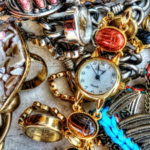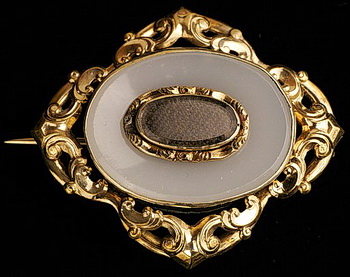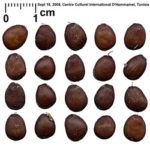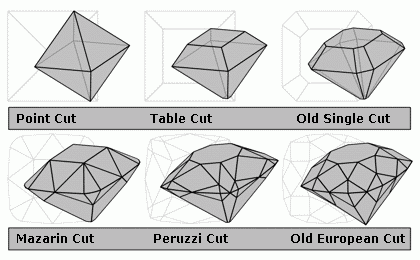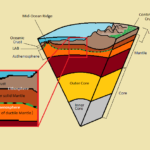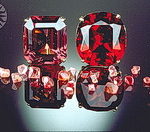
A gemstone that occurs in a wide variety of colors in both natural and treated form, topaz is a rare silicate mineral. Often confused with other gemstones, the very popular treated versions of topaz with a blue color are shrugged off as cheap apatite and aquamarine gemstones. The more neutral colored topaz are confused with citrine and smoky quartz but there are several specimens of the topaz mineral that rival the likes of sapphire and diamond. Here is what you need to know about the topaz gemstone.
What is Topaz?
Topaz has a chemical composition of Al2SiO4(F,OH)2. Occurring usually in igneous rocks like rhyolite and pegmatite, they form as they cool down over the years. They are also naturally occurring in water-worn pebbles from streams that flow down from these rocks.
A well-known gemstone, it comes in a large variety of colors. Some of the colors are naturally occurring, while others are achieved through treatments of the colorless or pale topaz specimens. Different processes like heat treatment, radiation, and metallic coatings are used to give topaz its different colors.
The most popular form of topaz is in the blue color. Blue topaz does not occur commonly in its natural form and most of the blue topaz in the market is actually treated to achieve that color. This attractive color that makes it popular all over the world.
The Physical Properties of Topaz
As with any other gemstone, its hardness is considered to be one of the foremost qualities for topaz. This particular gemstone is a very hard mineral found in nature. The hardness index on the Mohs Hardness Scale puts topaz crystal at an 8 from a scale of 10.
The most common and naturally occurring colors in topaz crystals are colorless to milky, yellow to brownish hues. It also exists in blue, red, purple, pink and red but they are very rare and not often found as gem quality in nature.
If the topaz crystal is able to grow unrestricted, it forms orthorhombic crystalline structures, which typically have striations running parallel to the long axis of the crystal.
It also happens to have a basal cleavage that is quite distinctive. The cleavage breaks along the long axis of the crystal. This distinctive cleavage is the reason why topaz is a very fragile crystal, despite ranking among the hardest gemstones out there. The Mohs Scale Hardness index is nothing more than an indicator of how scratch-resistant a particular crystal is. The actual resistance to breakage is known as tenacity for crystals and topaz crystal is not that tenacious.
Considering the fact that the mineral composes silicone, aluminum and gaseous elements, the specific gravity of topaz being 3.4 to 3.6 is considered unusually high.
Use as a Gemstone
For the longest time in history, yellowish gemstones were called topaz in many parts across the world. The earliest of gemstone traders did not even realize that the yellow gemstones were actually all different materials.
It was only around two centuries ago that people began to realize these yellow gemstones might be an assortment of different minerals. Around that time that it was also discovered that topaz can exist in different colors. Before the 1970s, if you went into a jewelry store asking for topaz, jewelers would show you gemstones that were yellowish or brownish in color. But the 70s and the 80s saw blue topaz become increasingly popular. Blue topaz is an incredibly beautiful form of the crystal and is very popular because it’s aesthetically pleasing look has made it even more marketable.
Treated Blue Topaz
 Among the various treatments used for changing the color of the topaz gemstone, radiation is the most common because it gives the gemstone its iconic blue color. The type of radiation used to treat the crystal in order to achieve this color can also result in the topaz becoming radioactive. That is not at all a reason for worry though. The radioactive nature of blue topaz actually wears off quite fast. The radiation starts to wear off from the moment that the treatment is completed. The United States Nuclear Regulatory Commission does not allow topaz crystals to be handled in any way until all of the radiation wears off.
Among the various treatments used for changing the color of the topaz gemstone, radiation is the most common because it gives the gemstone its iconic blue color. The type of radiation used to treat the crystal in order to achieve this color can also result in the topaz becoming radioactive. That is not at all a reason for worry though. The radioactive nature of blue topaz actually wears off quite fast. The radiation starts to wear off from the moment that the treatment is completed. The United States Nuclear Regulatory Commission does not allow topaz crystals to be handled in any way until all of the radiation wears off.
This is why companies using radiation treatment store them safely until their radioactivity decay comes down to a level that is safe for handling, manufacturing, and selling on the market.
Occurrence of Topaz
Fluorine in the Al2SiO4(F,OH)2 structure of topaz is the limiting factor in the formation of this mineral. This is also the reason why the topaz is so rare. A high enough concentration of fluorine gas to form topaz is not very common and happens in a few geological regions.
Topaz usually grows in the form of veins within igneous rocks, formed during the later stages of magma cooling down. There have been occurrences where topaz precipitating in the cavities of these rocks developed proper crystals. These crystals can have good clarity levels and can be used as gemstones.
The rarest form of topaz is Imperial Topaz. It is a naturally red form of the topaz crystal, which is so rare that only 1% of all the topaz gemstones that exist have this color. Imperial Topaz has a unique reddish-orange tone. Occurring mostly in Brazil and in the Ural Mountains of Russia, it was first used in imperial jewels for Russian Royalty in the 18th century. That is why it receives its name as the Imperial Topaz.
Topaz is found in several places around the world including India, Russia, Zimbabwe, Nigeria, and Australia. The leading producer of the topaz crystal is Brazil, which has a large number of gems. Sri Lanka is another important exporter of the topaz crystal.


